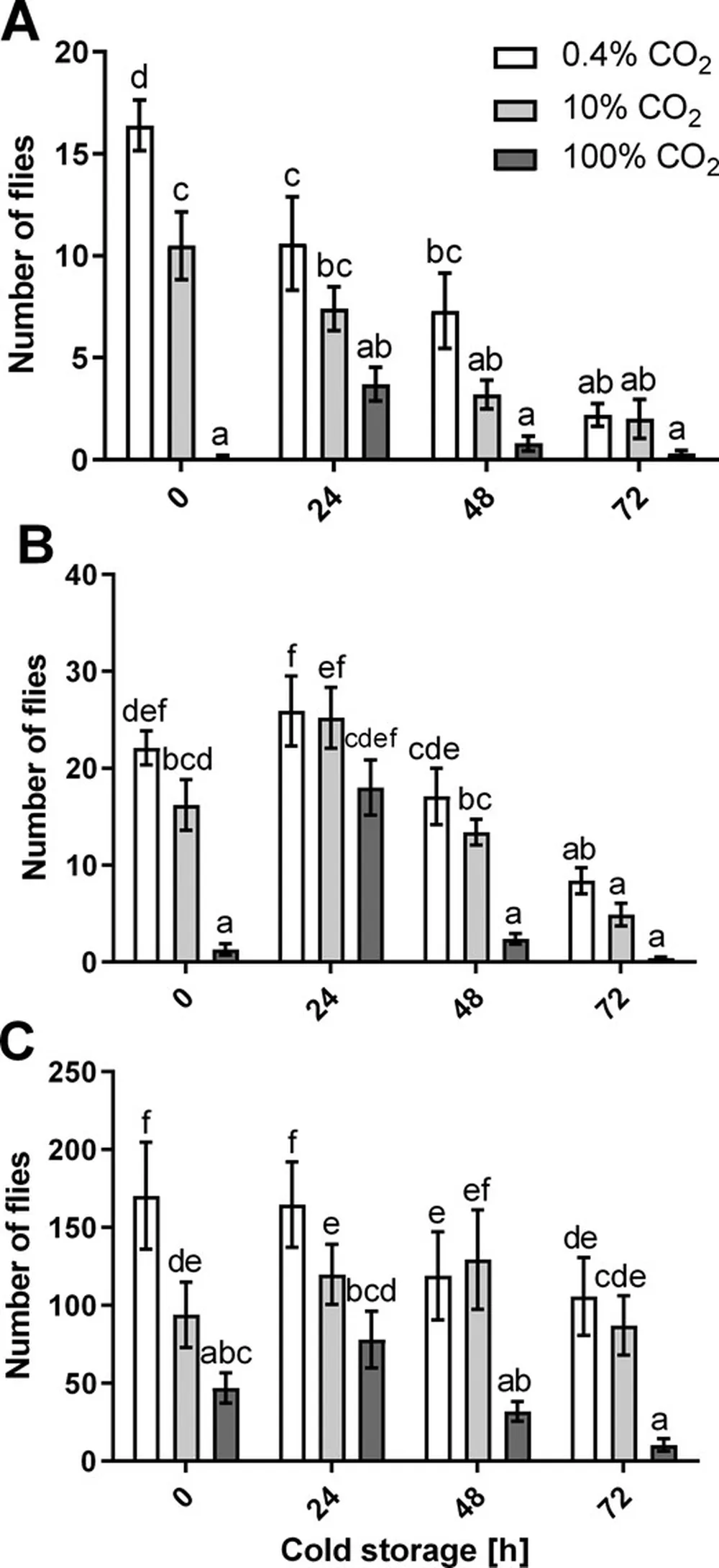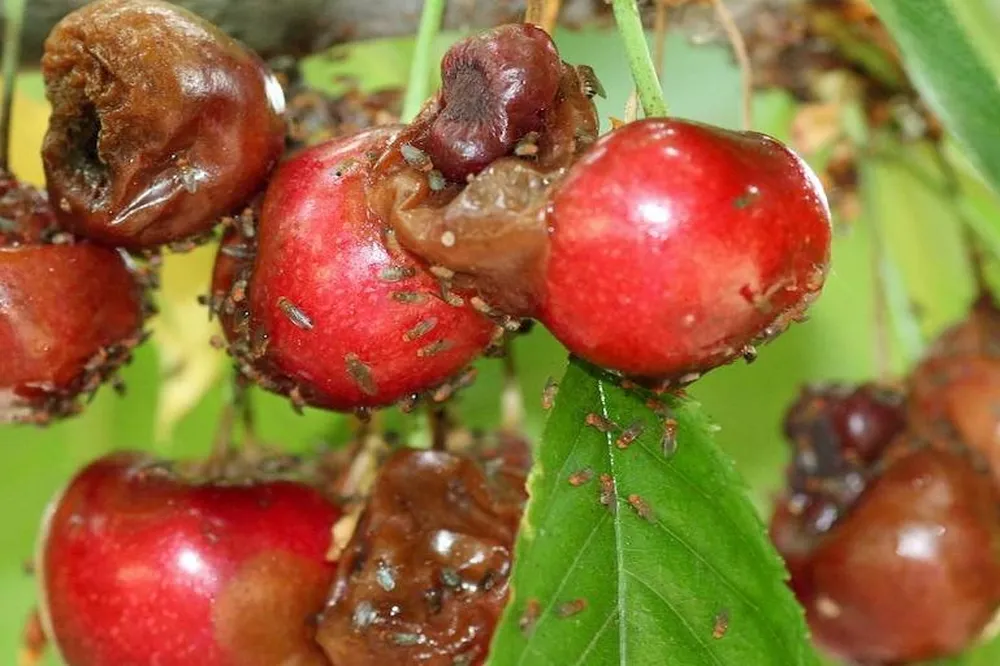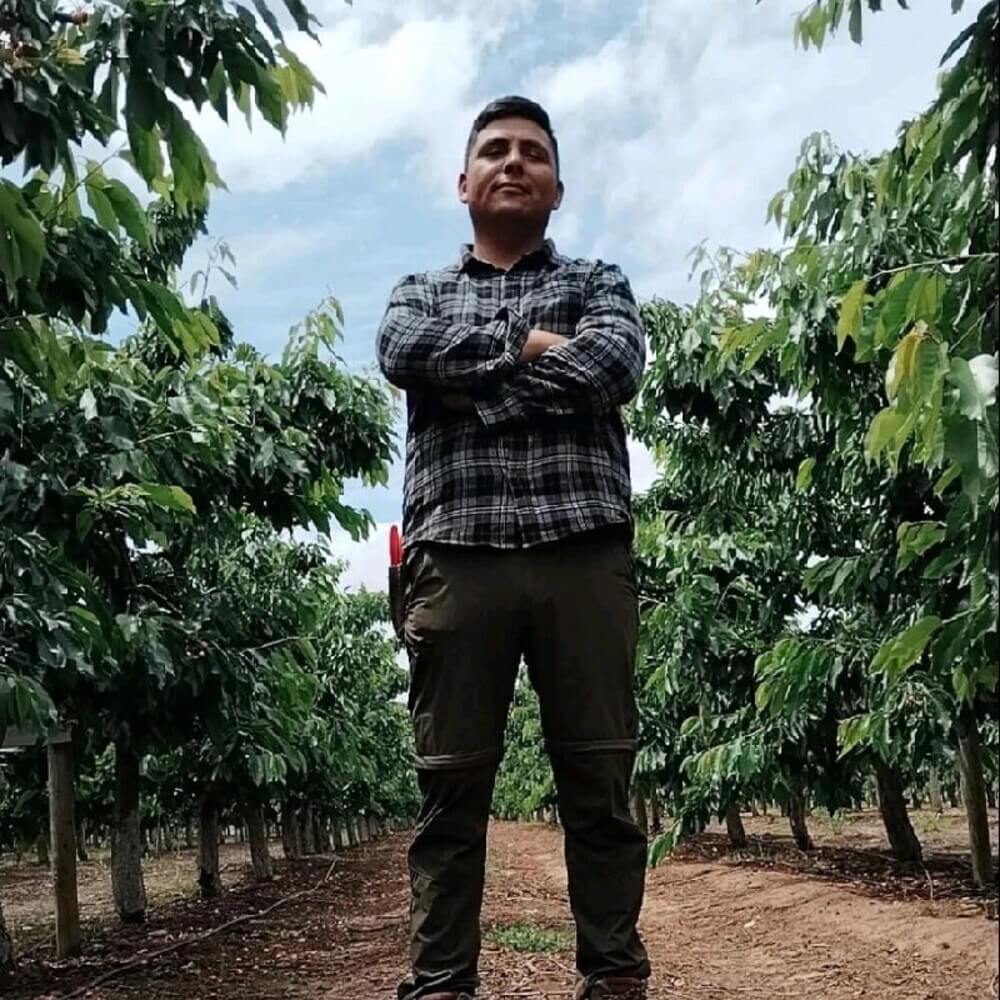Orchards, vineyards, and, in general, all plants that produce fleshy fruits with thin skin are subject to attacks by the fruit fly Drosophila suzukii (also known in English as spotted wing drosophila, SWD), with a significant negative economic impact.
The insect attacks fruits in the field; however, early infestations may be overlooked by current production sorting practices, as visible signs may not appear for several days.
Normally, the storage conditions applied to extend fruit shelf life include cold storage at an average temperature of 1–4°C and an increase in CO2 concentration between 10% and 20%, depending on the species considered.
The selection process
The procedure therefore requires that the harvested fruits be transported to a processing facility and then selected based on the required commercial standards.
It is therefore clear that, in this first phase, all fruits with visible malformations, such as softened tissue resulting from drosophila infestation, are removed.
However, the infestation is not easily visible during the first two or three days after egg-laying and, consequently, often goes unnoticed during the sorting process.
The Slovenian study
Therefore, the investigation conducted by the Agricultural Institute of Slovenia focused on identifying fruits that have not yet shown visual signs of drosophila infestation and cannot be identified using conventional methods in the post-harvest chain.
The researchers hypothesized that insect survival would be affected by an artificial atmosphere with low temperatures and high CO2 concentrations and tested this on blueberry, raspberry, and cherry.
The results show that raspberries were the most suitable host for SWD development, with an SWD development rate more than five times higher than that of blueberries and more than 50 times higher than that of cherries.
Results and protocols
In general, the development of drosophila was negatively affected by both high CO2 concentrations and cold storage.
Additionally, SWD infestations in all three examined fruit species were substantially reduced by a 24-hour fumigation with 100% CO2, performed without cold storage.
In contrast, cherries did not experience a substantial reduction in infestations when exposed to 10% CO2 in the absence of cold storage.
 Figure 1. The highest number of SWD developed in fruit stored cold for 24 hours in normal air and those exposed to 10% CO2 and stored cold for 24 hours. The lowest number of SWD developed in fruit stored cold and exposed to 100% CO2 for 72 hours, followed by fruit incubated for 24 hours in 100% CO2 at room temperature.
Figure 1. The highest number of SWD developed in fruit stored cold for 24 hours in normal air and those exposed to 10% CO2 and stored cold for 24 hours. The lowest number of SWD developed in fruit stored cold and exposed to 100% CO2 for 72 hours, followed by fruit incubated for 24 hours in 100% CO2 at room temperature.
Instead, cold storage alone was considered too slow as a practice and therefore is not considered effective.
The insecticidal effectiveness of CO2 fumigation was reduced by simultaneous low-temperature treatment and CO2 treatment.
Researchers observed interactions between fumigation with CO2 and cooling and proposed a simple protocol for post-harvest management that can be implemented without the need for sophisticated equipment.
 Figure 2. Severe Drosophila suzukii attack on cherry trees
Figure 2. Severe Drosophila suzukii attack on cherry trees
For this reason, a 3-hour treatment with 100% CO2 at room temperature before cold storage was implemented to ensure optimal sanitization of the products.
Source: Nika Cvelbar Weber, Špela Modic, Primož Žigon, Jaka Razinger, Postharvest CO2 treatment and cold storage for Drosophila suzukii (Diptera: Drosophilidae) fruit infestation control, Journal of Economic Entomology, Volume 118, Issue 1, February 2025, Pages 274–281, https://doi.org/10.1093/jee/toae264
Figures: Weber et al., 2025, Agribon, MSU
Melissa Venturi
University of Bologna
Italian Berry - All rights reserved












